
Discover the history around delicious doughnuts.
- Subject:
- Reading Informational Text
- Material Type:
- Homework/Assignment
- Author:
- Kristin Robinson
- Date Added:
- 01/03/2020

Discover the history around delicious doughnuts.
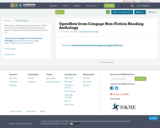
Non-fiction reading anthology appropriate for college-level introductory English courses: Developmental English / Integrated Reading & Writing, English Comp I & II.

Reading anthology to accompany college-level introductory English courses: Developmental English / Integrated Reading & Writing, English Comp I & II.

This is the third day in a longer unit. Students will use two informational texts two analyze the theme of racism, especially in the context of interracial marriage and apply those concepts to Act I, Scene i of Othello. This lesson was created by Kristi Bose and is designed for Grade 9 English Language Arts students. Each student will analyze the theme of racism in Othello as a starting point for a discussion about racism in today’s society. This Remote Learning Plan addresses the following NDE Standard: NE LA 10.1.5d, NE LA 10.1.6d, 10.1.6i, 10.1.6.n, and NE LA 10.1.6o.
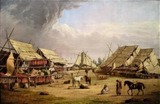
In this unit from Central Valley School District in Washington, students dive into inquiry, engaging with compelling questions to help learn about the culture of some of their tribal neighbors and the forces that brought change to the northwest: fur trade era and exploration. The module includes detailed teaching notes for planning and executing instruction, emphasizing close reading of complex texts and specific strategies for supporting students' evidence-based reading and writing. It provides clear requirements for student work, along with summative assessments, central texts, key resources, and protocols to facilitate learning.
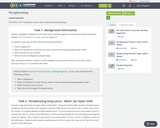
This lesson is for 7th graders to learn about and practice paraphrasing.
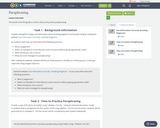
This lesson is for 6th graders to learn about and practice paraphrasing.
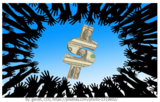
College athletics are a billion dollar industry. Universities, coaches, the NCAA, and television companies make millions and even billions of dollars a year off the entertainment provided by student athletes. This seminar will examine the controversy surrounding the issue of whether student athletes should be receiving a monetary stipend beyond scholarships. The seminar will allow the student to develop a logical argument on a controversial topic based on facts.StandardsCC.1.2.11–12.DEvaluate how an author’s point of view or purpose shapes the content and style of a text.CC.1.2.11–12.EAnalyze and evaluate the effectiveness of the structure an author uses in his or her exposition or argument, including whether the structure makes the points clear, convincing, and engaging.

Meet the PenPals helps students think critically and share information about people in different communities around the world.In this class activity, students will learn:1. How to summarize relevant information2. How to share information with a group3. Students will learn how communities around the world are both similar and differentThis activity will help students achieve the following objectives:- Students will practice speaking and listening skills in an authentic way- Students will have fun learning about people around the worldStandard Alignment:CCSS.ELA-LITERACY.CCRA.SL.1CCSS.ELA-LITERACY.CCRA.SL.5CCSS.ELA-LITERACY.CCRA.L.1CCSS.ELA-LITERACY.CCRA.L.2
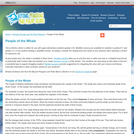
This article describes how the lifestyle of Alaska's Inupiat people have changed over time, and the new challenges they now face as a result of a changing climate. Versions are available for students in grades K-1, 2-3 and 4-5. Related science and literacy activities are included.

Athletes always try to gain an advantage over their opponent. They work out hard, meticulously watch what they eat, and in some cases take supplements. Some athletes even go to the extreme and take performance enhancing drugs, steroids, known as PED’s. This seminar will provide the learner the ability to acquire and integrate the knowledge of the history of performance enhancing drugs into today's sports world.StandardsCC.1.2.11–12.ADetermine and analyze the relationship between two or more central ideas of a text, including the development and interaction of the central ideas; provide an objective summary of the text.CC.1.2.11–12.BCite strong and thorough textual evidence to support analysis of what the text says explicitly, as well as inferences and conclusions based on and related to an author’s implicit and explicit assumptions and beliefs.

This unit shows instructional approaches that are likely to help ELLs meet new standards in English Language Arts. Built around a set of famous persuasive speeches, the unit supports students in reading a range of complex texts. It invites them to write and speak in a variety of ways and for different audiences and purposes. Students engage in close reading of Abraham Lincoln's Gettysburg Address, Martin Luther King, Jr.'s I Have a Dream speech, Aristotleí˘äĺä˘s Three Appeals, Robert Kennedyí˘äĺä˘s On the Assassination of Martin Luther King, and George Wallaceí˘äĺä˘s The Civil Rights Movement: Fraud, Sham, and Hoax, Barbara Jordaní˘äĺä˘s All Together Now. The five lesson culminate with student's constructing their own persuasive texts.
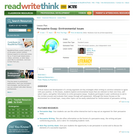
How can we convince others to agree with us on important issues? In this lesson, students explore relevant environmental issues and gather information to write persuasive essays.

This Learning Plan was created by Tessie Boudreau as part of the 2020 NDE OER Project. The attached Remote Learning Plan is designed for Grade 6 English Language Arts students. Students will understand the components of a book review and real life application. Students will draft and publish their own book review using persuasive writing techniques. This Remote Learning Plan addresses the following NDE Standard: NE LA It is expected that this Unit Plan will take students 1-2 weeks to complete.
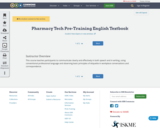
This course teaches participants to communicate clearly and effectively in both speech and in writing, using conventional professional language and observing basic principles of etiquette in workplace conversations and correspondence.
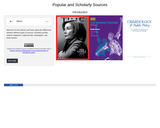
This tutorial outlines the differences between different types of sources: scholarly journals, popular magazines, trade journals, newspapers, and book reviews.
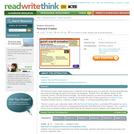
The Postcard Creator helps students learn to identify all the typical parts of a postcard, and then generate their own postcard messages by typing information into letter templates. After printing their texts, students can illustrate the front of their postcards in a variety of ways, including drawing, collage, and stickers.

In this lesson, you will examine how popular music reflects the diverse attitudes of the American people at different times throughout history. Through hands-on activities, you will learn how music can empower people to fight for a common cause. You will discover how protest songs evolved throughout history. For the culminating activity, you will create an annotated playlist of your top ten protest songs of all time.StandardsCC.8.5.9-10.D: Determine the meaning of words and phrases as they are used in a text, including vocabulary describing political, social, or economic aspects of history/social science.
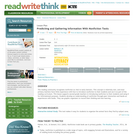
Students take a walk on the wild side when they develop an understanding of nonfiction texts with hands-on experiences and intense analysis.

In this activity, students in high school English or US History will use primary sources to learn about the women's suffrage movement.